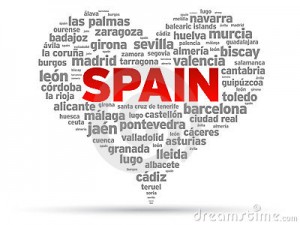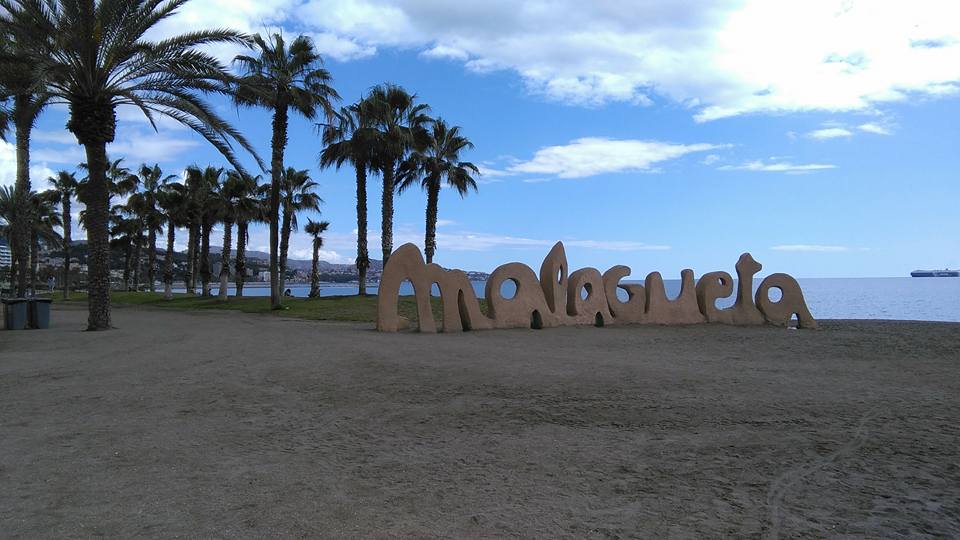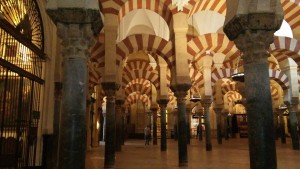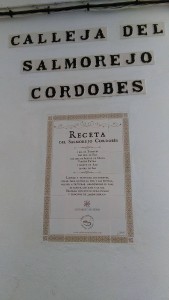¡PRIMAVERA!
Desde la última vez que escribí este blog también he estado muy ocupada. Terminaron las clases de la universidad y empezaron las vacaciones de Semana Santa. Aunque tengo mucho que hacer con el trabajo fin de máster quería ir a ver como se celebraba la semana santa en el sur de España porque las celebraciones son muy conocidas por sus ferias, fiestas y procesiones.
Estas procesiones suelen causar reacciones de miedo y confusión para la gente que no viene de países hispanos porque sus trajes se parecen a los que usaban el Klu Klux Klan en los estados unidos. Sin embargo, ¡la tradición en España vino primero! No se sabe realmente el origen de estas procesiones, pero se piensa que fueron empezadas por las cofradías que querían apoyarse mutuamente y experimentar la Penitencia. Es por esta razón que los participantes andar por las calles sujetando a cruces u otros objetos pesados al igual que lo hace Jesús en la biblia. A menudo lo hacen descalzo para “vivir el dolor de cristo”.
Así que con la esperanza de ver unas de las procesiones más grandes de España me dirigí a Malaga (las más grandes y más famosos tienen lugar en Sevilla pero desafortunadamente no quedaba alojamiento). También esperé ver un poco de sol sureño mientras estaba allí pero en vez de eso ¡llovía sin parar! En un viaje en coche compartir volviendo del sur aprendí que aunque en general la lluvia no es nada común en la región, es algo muy típico durante las vacaciones de semana santa e incluso me enseñaron una frase al respecto, “En abril aguas mil y todas en un barril”. Después de un poco de investigación aprendí que esta frase se refiere al hecho de que las regiones de Andalucía y Castilla la mancha son muy secas pero reciben casi toda su lluvia en abril. La frase se ve como algo positiva porque como os podéis imaginar ¡los granjeros de esta zona son muy felices cuando sus granjas y plantas por fin ven un poco de agua!
Al fin y al cabo las procesiones tenían que realizarse bajo un montón de lluvia y en mi opinión habrían sido mejor con buen tiempo, pero como soy de una isla me lo pasé muy bien volviendo a ver el mar!
En este viaje como nunca había ido a Córdoba decidí pasar un par de días allí también. La ciudad de Córdoba es famosa por sus fuertes conexiones con los musulmanes de cuando España se vio invadida por los moros, o de cuando los moros inhabitaban el sur de España (como quieras verlo). Los Moros vivieron en España durante 700-800 años antes de ser expulsados por lo que la cultura española es fuertemente influenciada por la cultura árabe. Por ejemplo, casi cualquier palabra que empieza por el prefijo “al” viene de una palabra árabe, tales como, “Almohada, alquiler e incluso Alcalá de Henares” donde vivo yo. En Córdoba se puede ver una anciana mezquita que fue convertido en un catedral cuando se expulsaron los moros. Era una experiencia muy extraña ver la mezcla de las dos religiones pero no podía parar de pensar en cómo debería seguir siendo una mezquita.
ENGLISH:
SPRING TIME
Since the last time I wrote this blog, I’ve also been very busy. University classes finished and technically the Easter Holidays began. Although I have a lot to do with my final dissertation, I also really wanted to travel down to the South of Spain to see how Easter is celebrated there as it is known to be a huge Christian festival with lots of parades or procesiones as they are known in Spanish.
These procesiones tend to look very strange to non-Spaniards’ as their costumes closely resemble those used by the Klu Klux Klan in the USA. However, Spain’s tradition came first! The origin of these processions is debated, but they are thought to have been formed by confraternities who wanted to support each other as well as experience “penance”. It is for this reason that the participants walk through the street with crosses and heavy objects just as Jesus does in the bible. They often do it barefooted in order to “live through the pain of Christ”
So in the hope of catching some of the biggest parades in Spain I headed to Malaga (the biggest and most famous are in Seville but unfortunately the accommodation was booked out). I also hoped to be greeted by some southerly sunshine whilst I was down there but instead was given rain by the bucketload! On a shared car journey back from Andalusia I later learnt that although rain was not common in this area, it was very typical during the Easter holidays and I even learnt a phrase to go with it, “En abril aguas mil y todas en un barril”. This roughly translates to, “A lot of water in April and all in one go”. This phrase exists because the South of Spain is very dry, however they seem to get all their water in April. This phrase is seen as something positive because, as you can well imagine the farmers in this largely agricultural area are extremely happy when they finally get some water for their crops!
In the end, the processions were a bit of a washout but being an island girl, I really enjoyed seeing the sea again!
On this trip, I also took the opportunity to visit Cordoba as I had never been. Cordoba is famous for having strong Muslim ties from back in the past when Spain was invaded or lived in by the Moors. The Moors lived in Spain for roughly 700-800 years before being expelled so Spanish culture is heavily influenced by Arabic culture. For example, any words in Spanish that begin with the prefix, “al” come from Arabic, such as “Almohada = pillow”, “Alquiler = rent” and even “Alcalá de Henares” where I live. In Cordoba you can see an old Mosque that was converted into a Cathedral when the Moors were expelled. It was a strange experience showing the mixing of two religions but I couldn’t help thinking how it should still be used as a Mosque today.
See you next time!
Nikki



